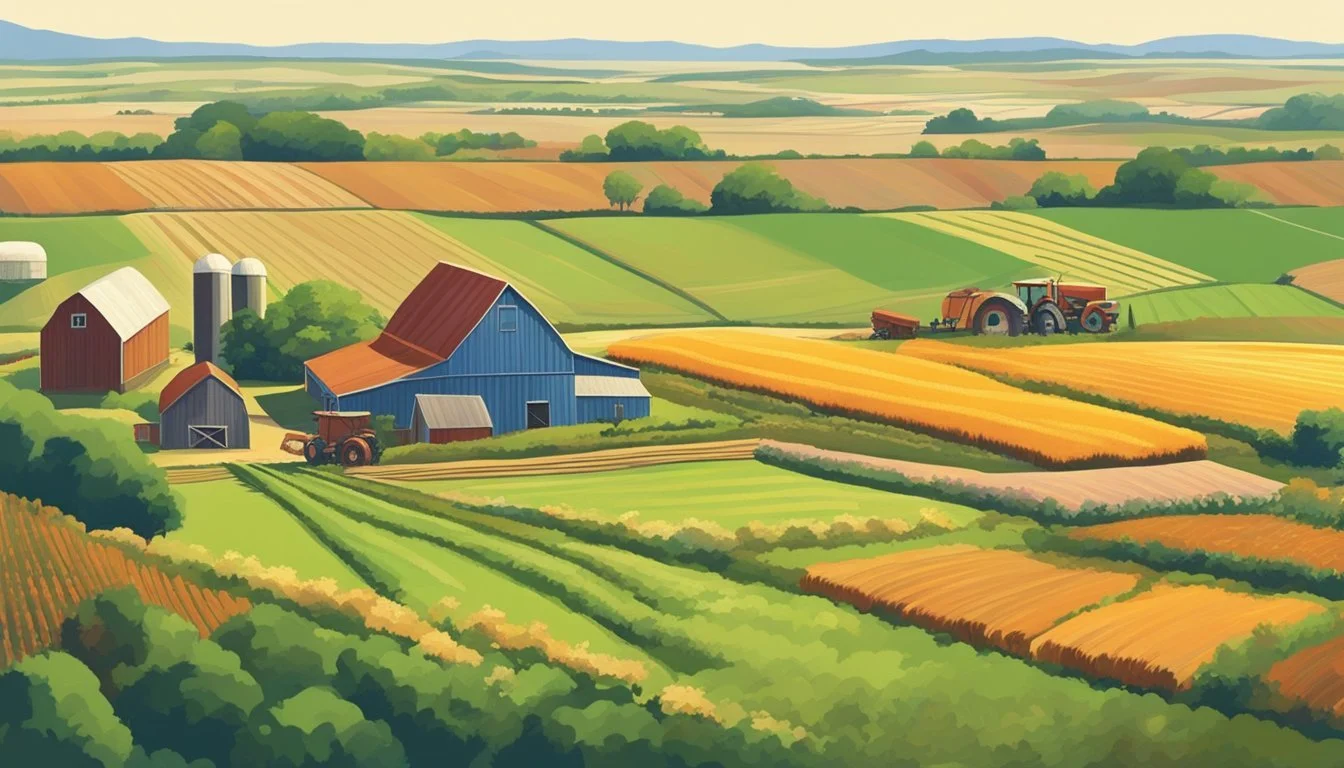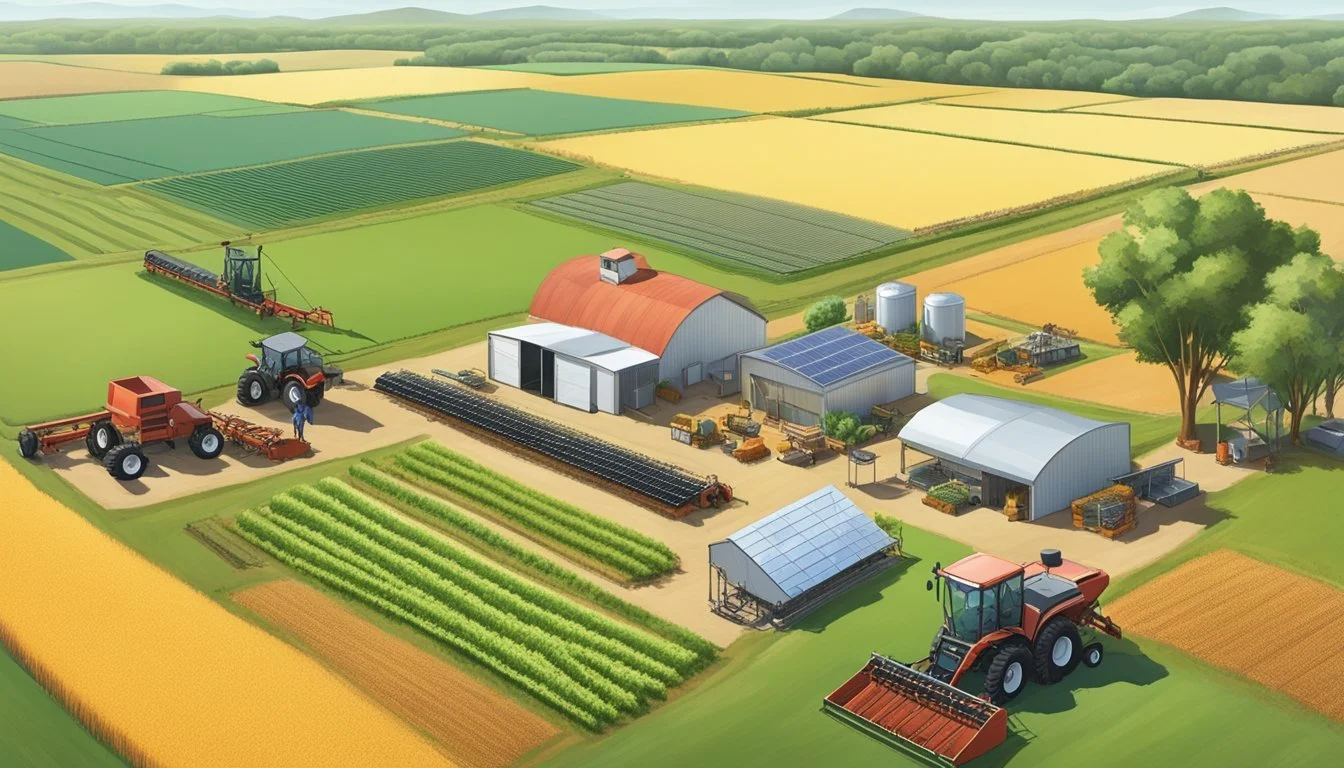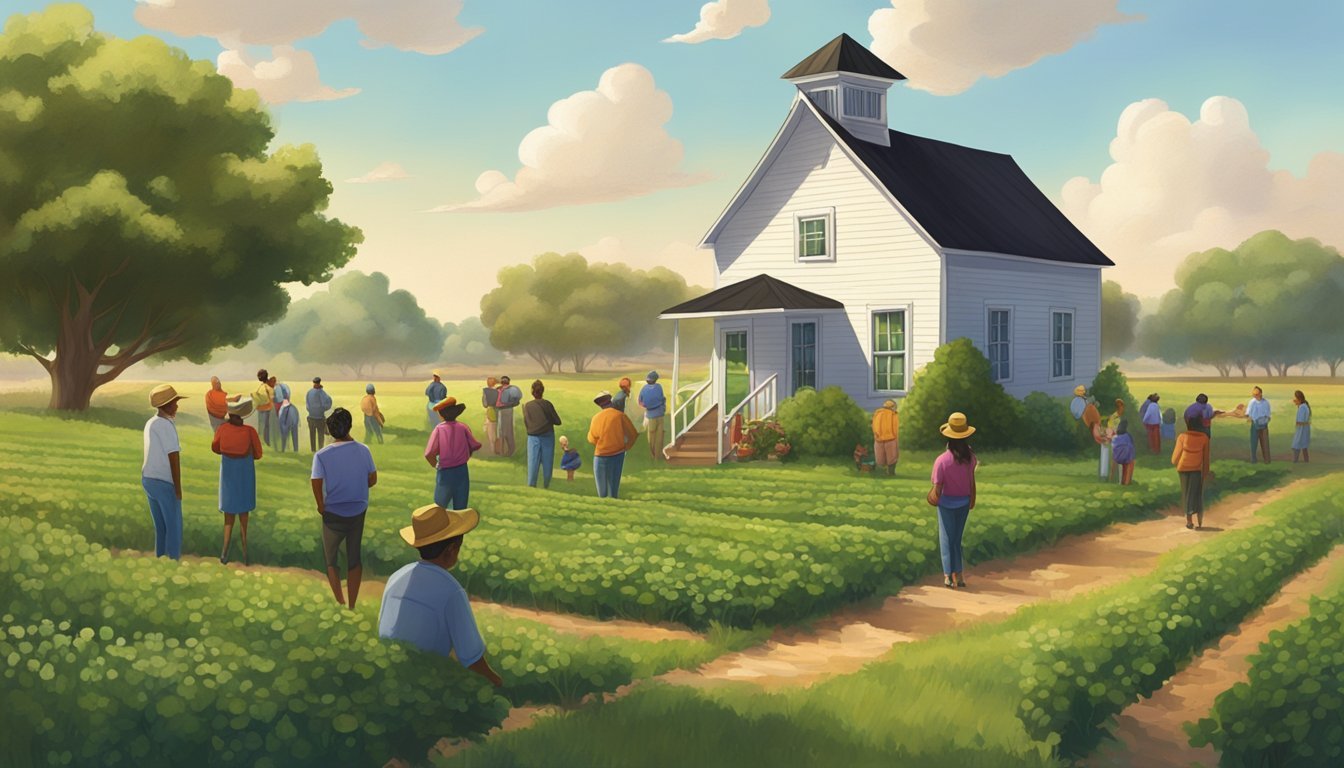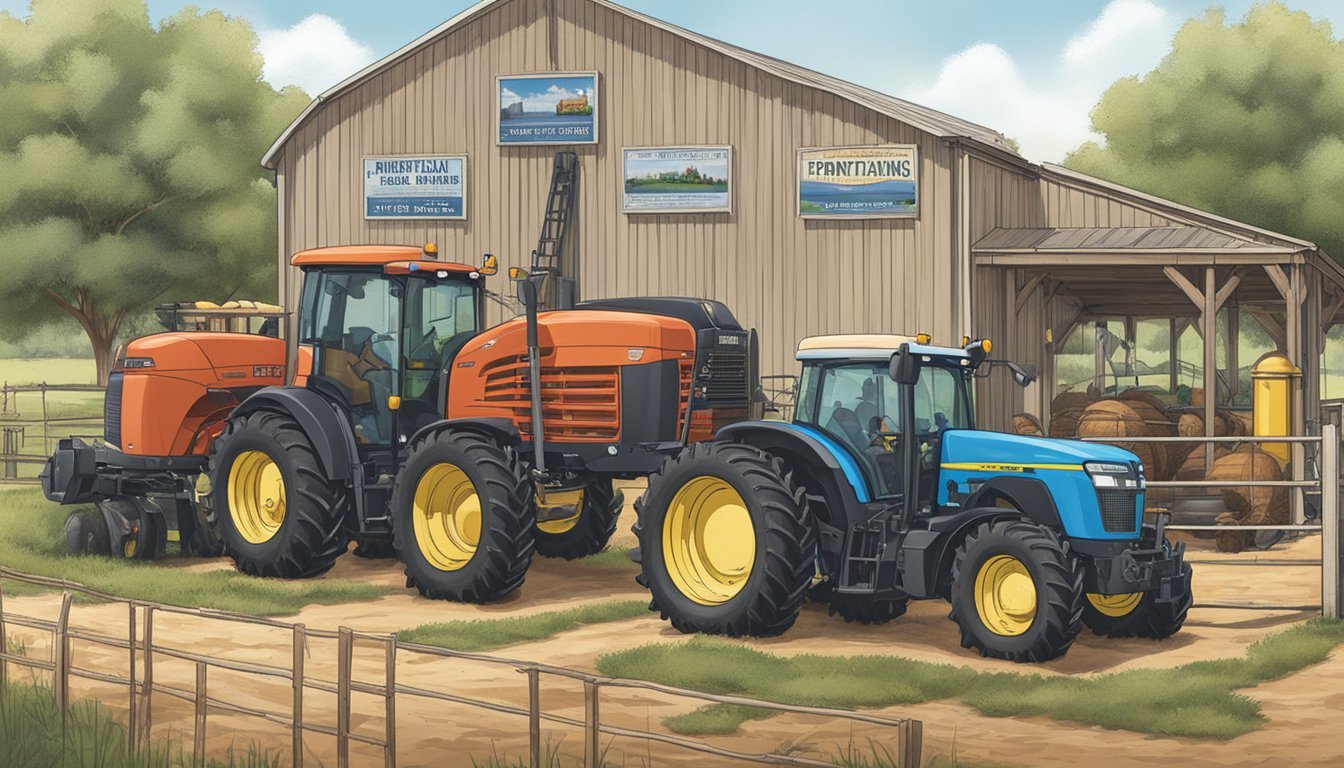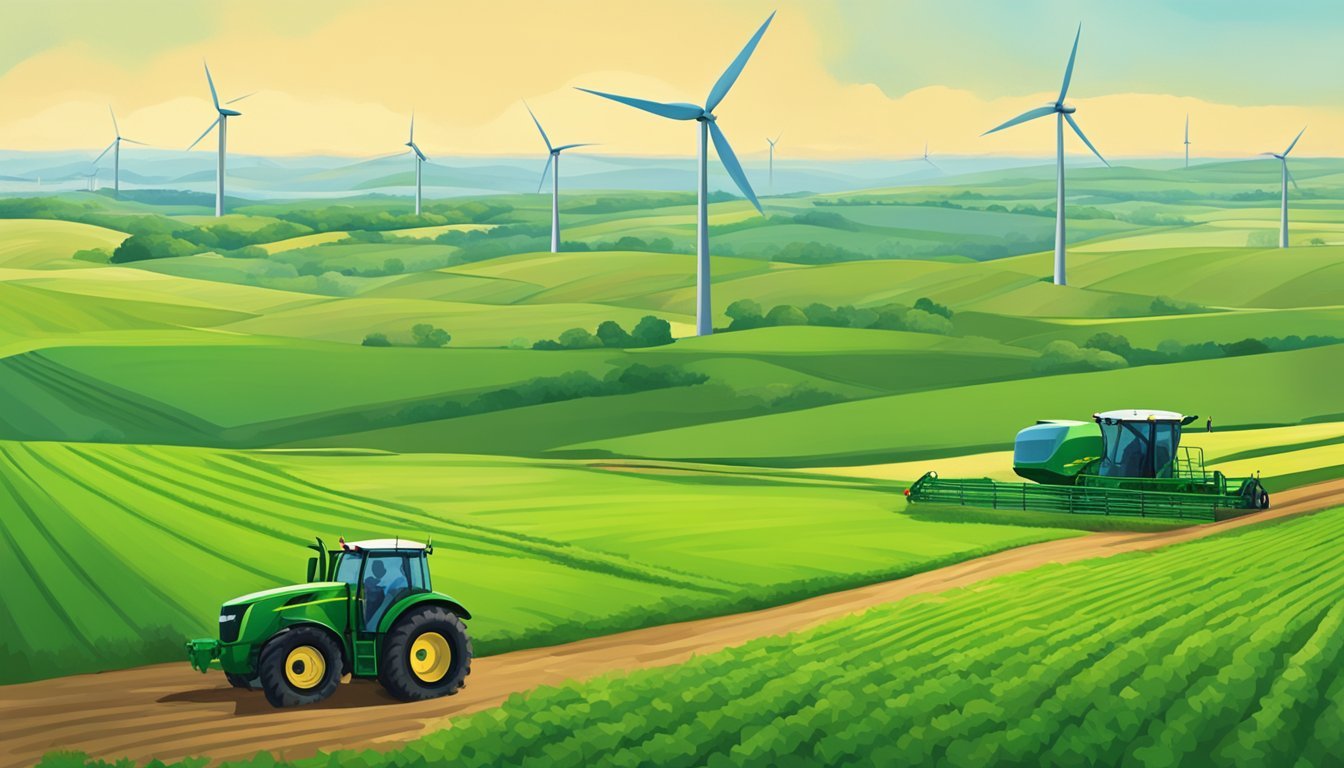Farming Communities in Texas
Growth, Challenges, and Opportunities
Texas is home to some of the most diverse and vibrant farming communities in the United States. From the fertile lands of the Rio Grande Valley to the expansive High Plains, each region offers unique opportunities and practices that contribute to the state's agricultural success. With a variety of climates and soil types, Texas provides an ideal environment for a wide range of crops and livestock, making it a cornerstone of American agriculture.
The state's agrihoods, such as Harvest Green in southwest Houston, blend residential living with farming activities, offering residents a chance to engage with agriculture on a personal level. These master-planned communities not only promote sustainable living but also foster a sense of community and connection to the land. Agrihoods represent a growing trend of integrating modern living with agricultural lifestyles, enhancing the appeal of farming communities in Texas.
Whether you're looking for farm houses, historic plantation homes, or modern farmhouses with ample land, Texas presents a wealth of opportunities for those interested in farming lifestyles. With properties spread across diverse regions like the Piney Woods and South Texas Plains, there's something to suit every preference. Texas farming communities offer a unique blend of tradition and innovation, making them a compelling choice for anyone interested in agriculture.
History of Farming in Texas
Farming in Texas has a rich history marked by early sustainable practices and significant expansion and modernization, transforming it into an agricultural powerhouse. This section explores the profound journey from ancient methods to contemporary advancements.
Early Agricultural Development
Texas's agricultural roots trace back to the sustainable practices of Native Americans, who cultivated crops such as corn and beans. These early farmers understood the local ecology and employed techniques that preserved soil fertility.
By the 18th century, Spanish colonists introduced cattle ranching, further shaping the agricultural landscape. Cattle became a vital part of Texas's economy and culture. Cotton farming also began to take hold.
When German and other European settlers arrived in the 19th century, they brought diverse farming techniques, further enriching Texas's agricultural practices. This period was marked by small family farms growing a variety of crops and raising livestock.
Expansion and Modernization
The late 19th and early 20th centuries saw a dramatic expansion and modernization of Texas agriculture. The construction of railroads opened new markets, allowing farmers to sell their products far and wide.
By the early 20th century, Texas emerged as a leader in cattle and cotton production, largely due to advances in agricultural technology and infrastructure. The introduction of mechanized farming equipment, such as tractors and mechanical harvesters, revolutionized crop and livestock management.
Agricultural research centers were established, improving crop yields and livestock breeds. Modern irrigation techniques, introduced in the mid-20th century, further boosted productivity, making Texas a leading agricultural state in the U.S.
Types of Farming
Farming communities in Texas focus on diverse agricultural practices, ranging from crop production to livestock rearing and embracing organic and sustainable methods. This section will examine these aspects, emphasizing important elements like specific crops, types of livestock, and methods used to enhance sustainability.
Crop Production
Texas is a powerhouse in crop production, with vast regions specializing in different types of crops. The High Plains are known for producing cotton and corn, thanks to the favorable climate and fertile soils.
In the Rio Grande Valley, farmers grow fruits and vegetables such as citrus and tomatoes.
The Blackland Prairie is notable for its grain production, including wheat and sorghum. Farmers in these areas utilize advanced irrigation systems and technology to maximize yields and manage water resources efficiently.
Livestock and Ranching
Livestock farming is a cornerstone of Texas agriculture, with ranchers raising various animals, including cattle, sheep, and goats. The South Texas Plains are famous for extensive cattle ranches where beef, especially grass-fed, is a primary product.
The Edwards Plateau area supports sheep and goat farming, with ranchers producing wool and meat for local and international markets.
Livestock farmers often employ rotational grazing practices to maintain soil health and ensure the sustainability of their grazing lands.
Organic and Sustainable Practices
In recent years, there has been a growing trend toward organic and sustainable farming in Texas. Practices like biodynamic agriculture, rooted in holistic approaches, are gaining popularity.
The Gulf Coast region and urban areas such as Austin are embracing organic farming, with USDA-certified organic farms like Green Gate Farms leading the way.
These farms focus on soil health, reducing chemical usage, and promoting biodiversity. Sustainable practices include crop rotation, composting, and integrating livestock to naturally fertilize the fields, ensuring long-term agricultural productivity and environmental health.
Texas Farming Communities
Texas farming communities offer unique living experiences with a strong focus on collaboration, sustainability, and accessibility to fresh, local produce. These communities integrate farming into daily life, creating vibrant and self-sustaining environments.
Community Dynamics
Farming communities in Texas such as Northlake and Hidden Springs are known for their collaborative nature. Residents often share responsibilities in maintaining communal spaces and cultivating crops.
These communities emphasize sustainable practices like crop rotation and organic farming, fostering a deep connection to the land. Social events such as harvest festivals and workshops on sustainable living are common, creating a sense of unity and shared purpose among residents.
Local Farmer Markets
Local farmer markets play a crucial role in the economic and social fabric of Texas farming communities. Farmers from areas like Fredericksburg and Northlake bring their best produce to these markets, which serve as hubs for fresh, locally-grown food.
These markets not only provide a source of income for small farmers but also promote a healthier lifestyle among residents. Seasonal produce, artisanal goods, and educational programs on healthy eating are typical offerings, making these markets essential for community engagement.
Agrihood Developments
Agrihoods, such as those found in Austin's Village Farm, are master-planned communities centered around agriculture. These developments incorporate USDA-certified organic farms into residential areas, offering residents direct access to fresh food.
Village Farm, for example, centers around Green Gate Farms and features onsite management to oversee agricultural activities. Agrihoods blend modern living with sustainable farming, providing amenities like shared gardens, farm-to-table dining, and educational opportunities on organic farming techniques.
Economic Impact
Farming communities in Texas have a significant influence on the state's economy, reflecting in both fiscal contributions and employment opportunities. This section explores how these agricultural activities bolster the state’s economic framework and labor market.
Contribution to State Economy
Agriculture in Texas is a powerhouse, adding substantial value to the state's gross domestic product (GDP). In 2019, the Texas food and fiber system contributed approximately $159.3 billion, accounting for about 8.6% of the state’s total GDP.
Agricultural Lands play a pivotal role, supporting a variety of productions from livestock to row crops. Economists from Texas A&M AgriLife have reported that these lands generated $186.1 billion in economic contributions recently, showcasing the sector's robust nature.
Continuous investment in rural development and innovative farming techniques maintains this economic vitality, ensuring that rural regions remain competitive and productive.
Employment and Labor Statistics
Agriculture is a major employer in Texas, supporting thousands of jobs across the state. The Texas A&M AgriLife Extension Service highlights the broad spectrum of employment opportunities created by farming activities, from field labor to administrative roles.
The sector's employment impact is vast, with a significant percentage of the workforce engaged in production agriculture and related industries. Accurate labor statistics ensure effective strategies for workforce development and economic planning.
These jobs are critical for rural development, enabling small communities to thrive and sustain their populations. Efforts to enhance labor conditions and offer competitive wages are essential for the continued prosperity of farming communities in Texas.
Technological Advancements
Recent years have seen Texas farming communities embracing cutting-edge technologies to improve efficiency and productivity. Key areas include the deployment of modern equipment and machinery, along with innovations that are transforming the way agriculture is practiced.
Modern Equipment and Machinery
The adoption of advanced equipment and machinery in Texas farming has led to significant improvements. Tractors, equipped with GPS and automated steering, ensure precise planting and harvesting.
Farmers like Todd Westerfeld utilize technologies that merge traditional tools with modern innovation. For instance, integrating silicon computer chips with machines reduces labor costs and increases accuracy. The use of drones has also become prevalent, allowing farmers to monitor crop health and irrigation needs efficiently.
Moreover, machinery like automated harvesters and seeders diminishes the manual workload, enabling farmers to manage more extensive tracts of land with fewer workers. These technological advancements not only boost productivity but also optimize resource utilization, making farming more sustainable.
Innovations in Agriculture
Innovations in agriculture have introduced solutions such as controlled environment agriculture (CEA) and vertical farming. These methods utilize automation, artificial intelligence (AI), and robotics to maintain optimal growing conditions for crops, particularly in urban settings.
Texas A&M AgriLife research explores these technologies to address food production challenges. Vertical farming, a rapidly expanding industry, exemplifies how technology can transform traditional practices by enabling year-round crop production indoors, reducing dependence on weather conditions.
Another notable innovation is the use of precision agriculture technologies. These systems analyze data from multiple sources to provide farmers with actionable insights on soil health, crop performance, and pest management. By employing such technologies, farmers can make informed decisions that maximize yield and minimize environmental impact.
Water Management and Environmental Issues
Texas farming communities face numerous challenges related to water scarcity and environmental sustainability as they strive to maintain agricultural productivity. Efforts focus on efficient water use and conservation strategies.
Challenges of Water Scarcity
Texas is experiencing significant water shortages. Rapid population growth, projected to reach 52 million by 2070, sharply increases water demand. The Texas Water Development Board (TWDB) notes that current demand for water is approximately 18.4 million acre-feet and is expected to rise substantially.
Climate change exacerbates this situation, leading to extended droughts that stress the state’s aquifers and reservoirs. Groundwater, which supplies nearly one-third of Texas water, is increasingly overdrawn, affecting both agriculture and other sectors.
Sustainable Water Use Practices
To help mitigate water scarcity, Texas farming communities are adopting various sustainable water use practices. Techniques such as drip irrigation reduce water usage by delivering it directly to plant roots, minimizing evaporation.
Crop selection also plays a crucial role; farmers opt for drought-resistant crops like certain types of cotton and wheat. Nonprofit organizations are stepping up, promoting strategies and funding initiatives to support better water management.
Furthermore, farmers collaborate with experts from institutions like Texas A&M University to implement advanced water conservation methods, ensuring crops receive adequate irrigation with minimal waste. By focusing on sustainability, these communities aim to balance agricultural needs with environmental stewardship.
Farm-to-Table Movement
The Farm-to-Table movement in Texas plays a crucial role in promoting healthy living by emphasizing the importance of local markets and organic produce in daily diets. Local restaurants and communities foster the relationship between local farmers and consumers.
Local and Organic Produce
The foundation of the Farm-to-Table movement lies in sourcing local and organic produce. This approach reduces food miles, ensuring fresher and more nutritious options for consumers. Local markets in Texas, such as farmers' markets, provide a direct platform for farmers to sell their produce, supporting local agriculture.
Restaurants in Texas increasingly prioritize menus featuring seasonal, organic ingredients. These establishments enhance flavor and sustainability by embracing local harvests. Communities benefit from access to fresh produce, boosting both health and local economies.
Education and Community Support
Farming communities in Texas benefit significantly from diverse educational programs and strong community support systems. These initiatives enhance agricultural knowledge and promote sustainable farming practices.
Agricultural Education
Schools and non-profits provide essential educational resources for Texas farmers. The Texas A&M Agrilife Extension Service and other agricultural institutions offer technical assistance, up-to-date agronomic information, and innovative techniques.
Hands-on learning experiences are vital, involving both adults and youth through workshops, field days, and internships. Farmers can access resources such as soil science, crop management, and pest control through local extension offices. Educational programs are often tailored to meet the needs of small-scale and historically underserved farmers, ensuring everyone has the opportunity to succeed.
Community Involvement and Support
Community involvement is critical for the success of Texas farming communities. Organizations like the Texas Small Farmers & Ranchers Community Based Organization and the Texas Agriculture Connection provide infrastructure for growers to collaborate and share best practices.
Support systems include Community Supported Agriculture (CSA) programs that connect consumers directly with local farmers. This model promotes food security and strengthens the local economy.
Community-driven efforts also focus on preserving farmland, with initiatives that educate and support sustainable practices. Local communities regularly engage in advocacy to promote agricultural policies beneficial to small farmers.
Through these networks, knowledge sharing becomes a common practice, enhancing the resilience and productivity of Texas's farming communities.
Challenges Facing Texas Farmers
Texas farmers face significant hurdles, including rising market competition, the effects of climate change, and difficulties in accessing crucial resources and capital.
Market Challenges and Competition
Texas farmers and ranchers deal with intense competition both domestically and internationally. Increased costs for equipment, seeds, and livestock feed drive up operating expenses, making it harder to maintain profitability.
Moreover, fluctuating market prices for crops and livestock add financial uncertainty. Farmers also must adapt to consumer preferences, which continuously evolve, often favoring more sustainable and organic options. To stay competitive, many farmers look for ways to innovate and diversify their product offerings, despite the associated risks and costs.
Adapting to Climate Change
Climate change presents a substantial challenge for Texas farmers. Droughts have become more frequent and severe, leading to decreased water availability. Texas leads in crop insurance payouts due to drought, verifying the financial impact.
The 2011 drought devastated farmlands, but recent conditions show even less underground moisture, exacerbating the struggle. Farmers must adopt new irrigation methods and drought-resistant crops to cope with these changes, which require significant investment and knowledge.
Access to Resources and Capital
Access to essential resources and capital is another major concern. Costs for fuel, fertilizers, and pesticides have risen, partly driven by global supply chain issues. The average annual cost for farmers has notably increased, stressing financial stability.
Securing loans and federal assistance are crucial for many. Texas farmers received over $1.6 billion in aid last year to manage various agricultural risks. Nonetheless, bureaucratic hurdles and stringent requirements can make obtaining capital challenging, especially for small-scale operations.
Policy and Regulations
Farming communities in Texas navigate a landscape shaped by both federal and state agriculture policies. These regulations impact aspects such as food safety protocols and obtaining organic certification, crucial for maintaining standards and protecting consumer interests.
Federal and State Agriculture Policies
Federal policies, primarily overseen by the USDA, play a significant role in directing agricultural practices. The USDA's programs offer financial aids, such as subsidies and grants, and set forth guidelines to ensure sustainable farming.
At the state level, Texas has specific statutes like the Right to Farm law. This law shields agricultural operators from litigation related to standard farming activities. Recent updates as of September 2023 have strengthened these protections, influenced by legislative acts such as HB 1750, HB 2308, and HB 2947.
Food Safety and Organic Certification
Food safety regulations ensure that agricultural products are safe for consumption. Both federal and state guidelines mandating proper handling, storage, and production processes are enforced to prevent contamination.
To achieve organic certification, farmers must follow stringent USDA guidelines. These guidelines include restrictions on synthetic fertilizers and pesticides, along with specific soil and crop management practices. Certification requires an inspection process and adherence to continuous compliance checks.
The implementation of these policies helps Texas farmers maintain high standards, ensuring their produce is both safe and environmentally sustainable. The focus on food safety and organic certification highlights the importance of quality in agricultural outputs from Texas farming communities.
Future Outlook
The future of farming in Texas will be significantly influenced by evolving trends in agricultural production and increasing emphasis on sustainable and regenerative practices.
Trends in Agricultural Production
Innovations will play a critical role in Texas agriculture. The integration of precision farming technologies, such as drones and soil sensors, is expected to enhance crop yields and optimize resource use.
Climate change remains a notable challenge, prompting a shift toward more drought-resistant crops and livestock adaptations. The costs associated with farming have risen, now averaging over $120,000 annually for Texas farmers. Addressing these financial pressures requires continued technological adoption and resilient farming practices.
Additionally, the U.S. Department of Agriculture census highlights substantial growth in new and beginning producers, an indicator of a dynamic and evolving agricultural landscape.
Prospects for Sustainable and Regenerative Agriculture
The adoption of sustainable practices is increasingly critical for Texas farmers. Techniques such as crop rotation, cover cropping, and reduced tillage are helping to maintain soil health and reduce environmental impact.
Regenerative agriculture aims to restore and enhance farm ecosystems. Practices include holistic management of livestock and diversified cropping systems that increase biodiversity. This approach not only improves long-term soil fertility but also helps mitigate climate change effects.
Furthermore, water scarcity issues are driving farmers to innovate with water-efficient irrigation techniques. The emphasis on organic farms is rising, with Texas seeing an increase in USDA-certified organic farms, promoting healthier food production and environmental stewardship.

